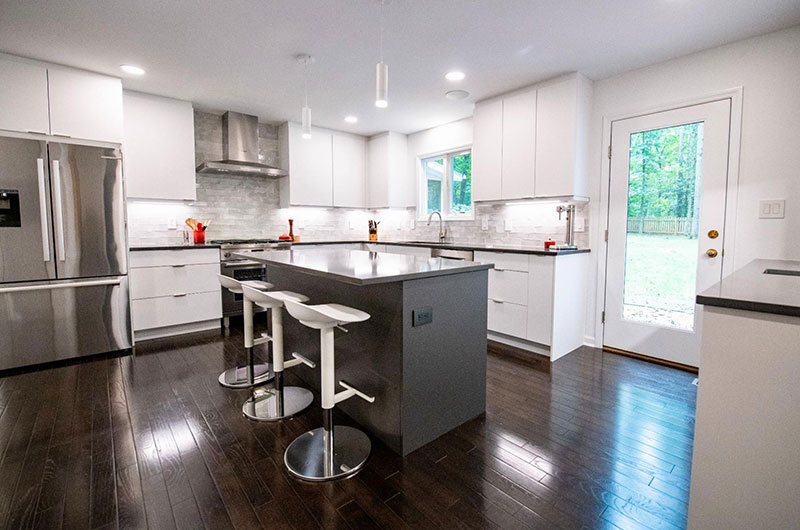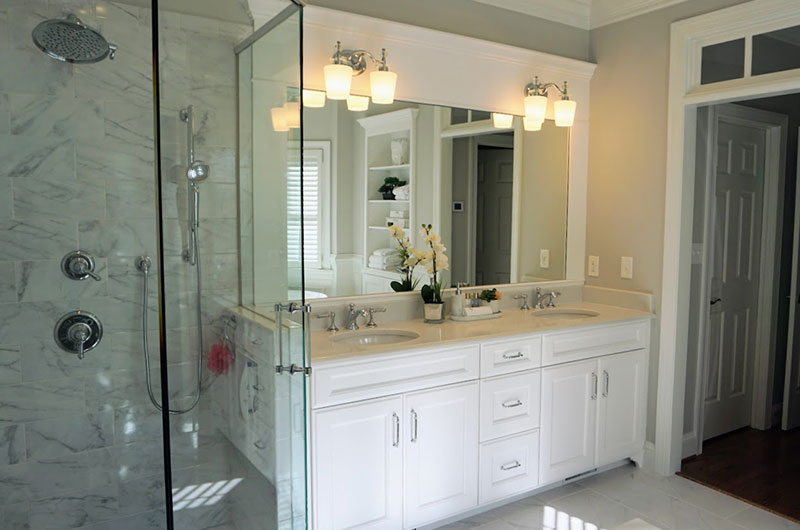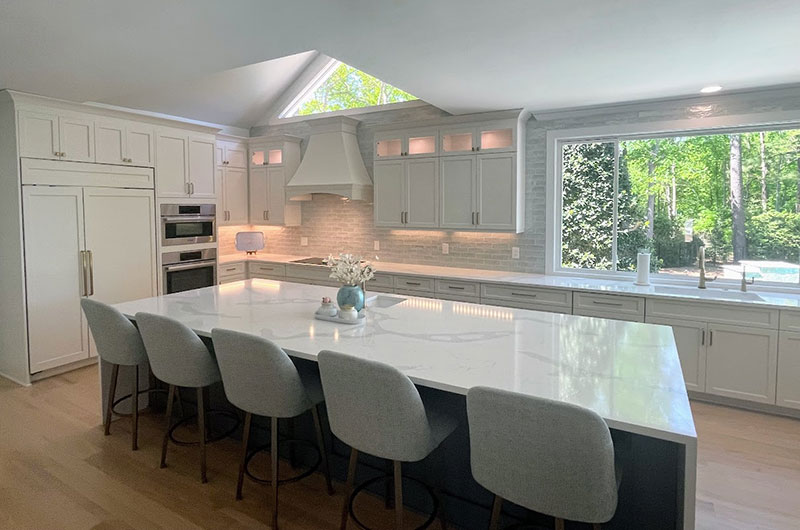What is my design style for my new cabinetry?
Most cabinet design styles fall into one of three categories: Contemporary, Traditional, or Transitional. You don’t have to pick one style completely - blending 2 styles together is the best way to let your design have all of the elements that represent your home. Do you like some traditional and some modern? Modern farmhouse may be the style for you. Read below to help get design ideas of the kinds of cabinets that you want to incorporate into your remodeling project.

Contemporary
Contemporary style cabinets are characterized by clean lines, sleek surfaces, and a minimalist approach. Here are some design details to consider when creating contemporary-style cabinet designs:
- Opt for flat or slab-style cabinet doors without elaborate detailing or raised panels.
- Use sleek, minimalist hardware or consider handle-less cabinets with integrated pulls.
- Stick to a neutral color palette with shades of white, gray, black, or natural wood tones.
- Consider high-gloss or matte finishes for a contemporary touch.
- Avoid intricate molding and ornate details.
- Maximize storage with cleverly designed, hidden storage solutions to keep the space clutter-free.

Traditional
Traditional style cabinets are known for their timeless and classic appeal, often featuring intricate detailing, warm colors, and ornate hardware. Here are some design details to consider when creating traditional-style cabinet designs:
- Opt for cabinet doors with raised panels for a more traditional and elegant look.
- Consider adding arches, beading, or other decorative elements to the panels.
- Incorporate crown molding, dentil molding, or other decorative trim details along the tops of cabinets.
- Choose warm and rich wood finishes, such as cherry, mahogany, or oak, to enhance the traditional aesthetic.
- Stained or glazed finishes can add depth and character to the cabinets.
- Incorporate furniture-style details like bun feet, turned legs, or decorative valances.

Transitional
Transitional style cabinets combine elements of both traditional and contemporary design, creating a balanced and timeless look. Here are some design details to consider when creating transitional-style cabinet design:
- Embrace clean lines and a straightforward design, avoiding overly ornate or elaborate details.
- Choose cabinets with a simple, flat-panel door design for a contemporary touch.
- Opt for a neutral color palette with a mix of warm and cool tones, such as gray, beige, taupe, or soft whites.
- Use muted or earthy colors to create a balanced and calming atmosphere.
- Shaker-style cabinets with clean lines and a framed panel are versatile and work well in transitional kitchens.
- Choose a classic subway tile backsplash in a neutral color to add a touch of tradition. Or for a modern twist, consider a herringbone or vertically stacked pattern.
- Introduce a contrasting island with a different finish or countertop material to create a focal point.

